October 18, 2015
Martha O'Kennon
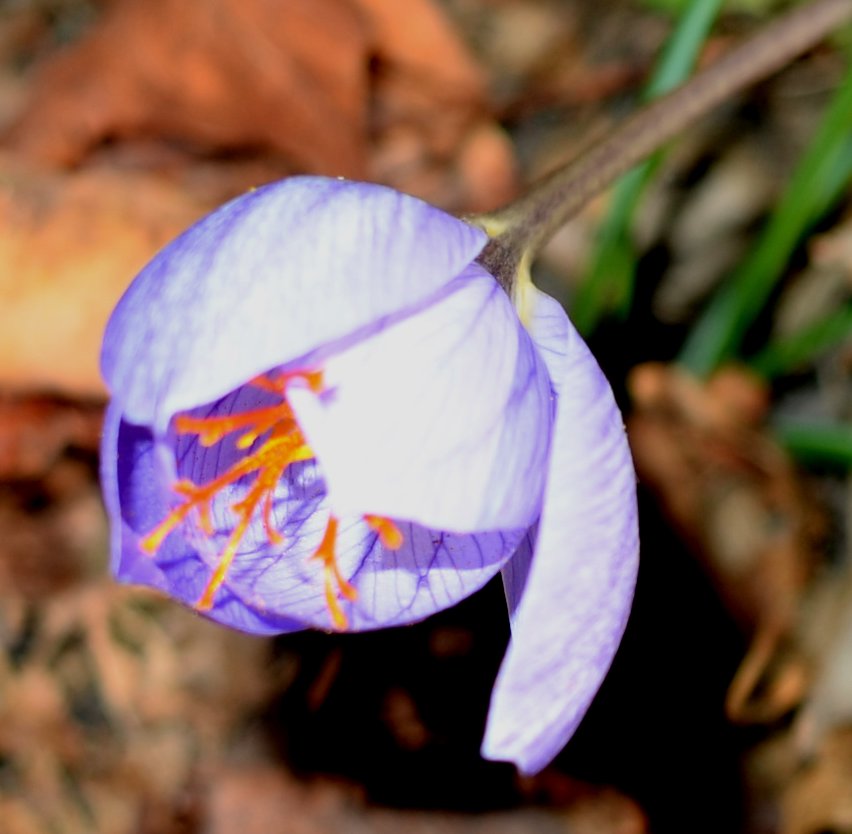
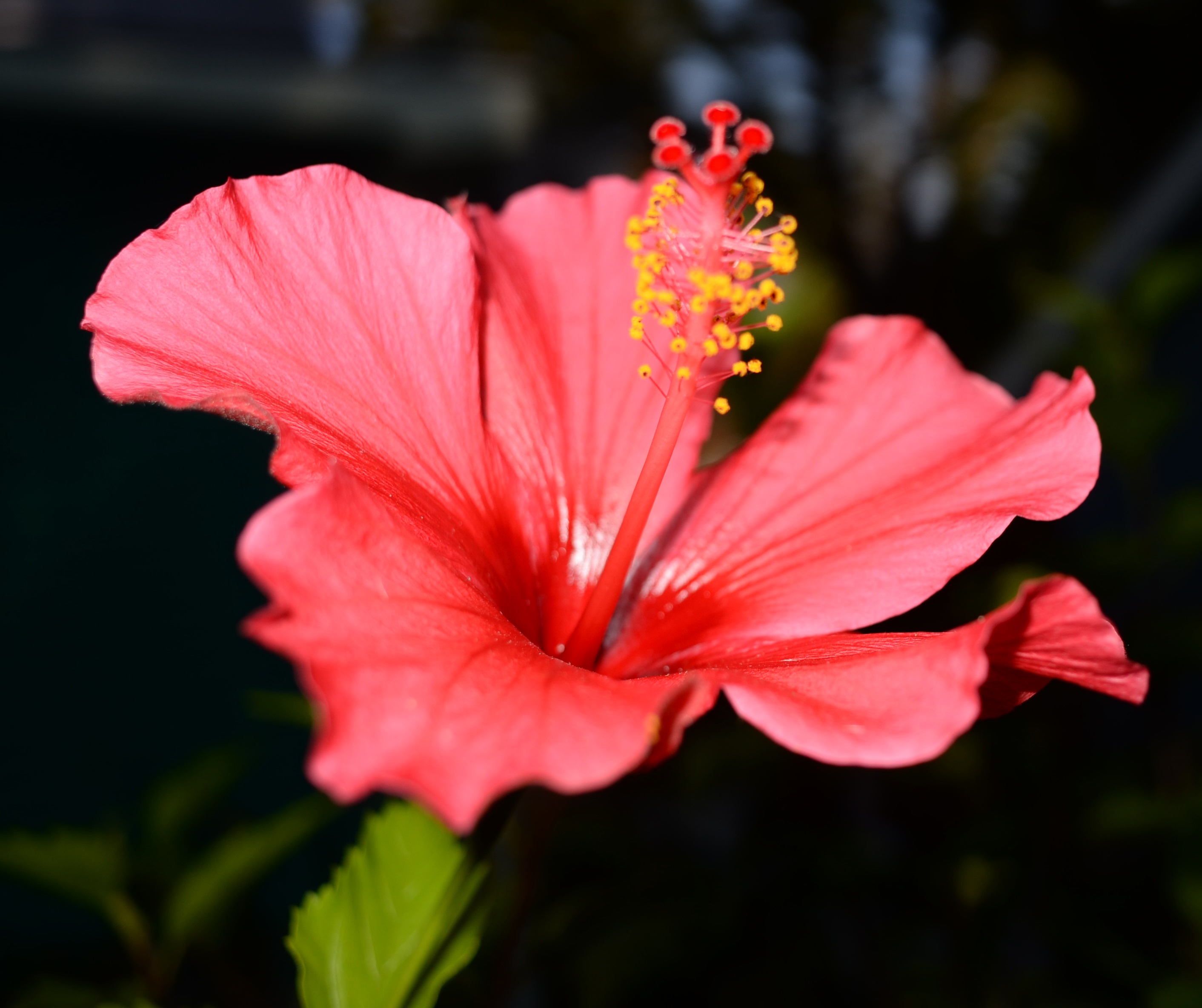
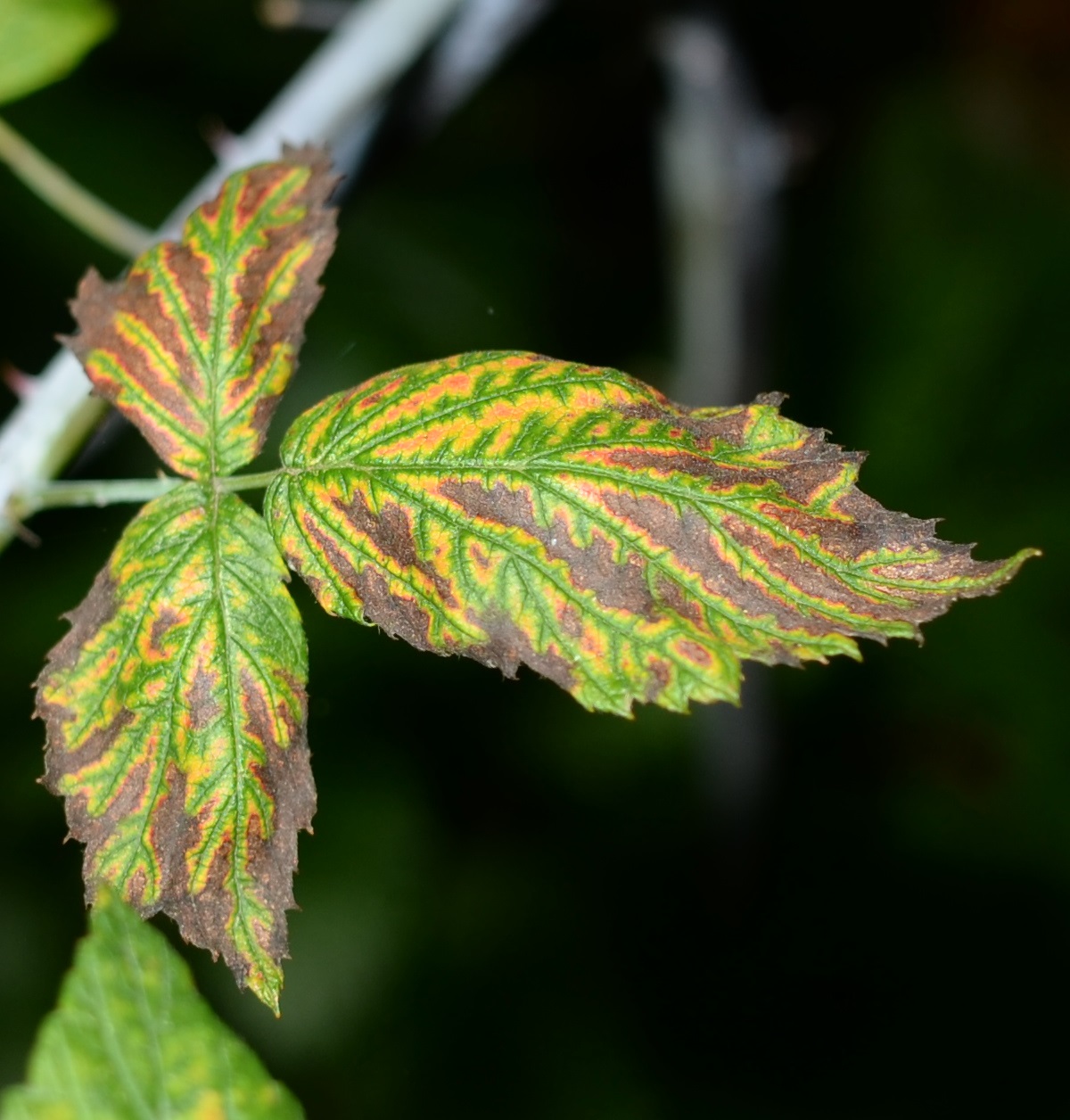
It is becoming more and more chilly, although the cool is still punctuated with warmer days. This is a "fall-blooming crocus". It may even be the one whose bright orange-red anthers constitute the spice and dye, saffron. One strange thing that happens to the hibiscus is that the blossoms start to stay blooming for more than the summer one-day bloom. This one bloomed for 4 days in a row. Actually, that plant has now joined the other non-hardy plants in the front porch, where they will be pampered through the winter. The raspberry plants, the very ones that gave us such a wonderful habitat for all sorts of insects and spiders, begin to tie-dye their leaves. Soon the canes will become leafless. A good mother would then cut back the canes that bloomed last year and keep the new ones, as that is where the berries will be next summer.
Remember that there is information in the name of the file for each image. You can see it by mousing over the image - look at the lower left of the screen.
I would try clicking on the image. If the little "+" sign appears, it means you can enlarge again. While it is in "+" mode, click on something you want to see more clearly and it will zoom to that section. Then the info is displayed in the address line above. If the image has been cropped
so that clicking on it doesn't result in a larger picture, you can always hit control plus to increase the size of the image.
The aphids continue to colonize the dying goldenrod stems. Here is a portrait of one of the little families. These colonies are easier and easier to spot, now that I've got a grip on just HOW tiny they are. Look how many sizes and colors there are. The pinkish one may or not be a different species. This little detail shows an adult with its wings that finally make it look like a "real" aphid. This one is so strangely shaped that I've no idea whether it is from a different species or not!
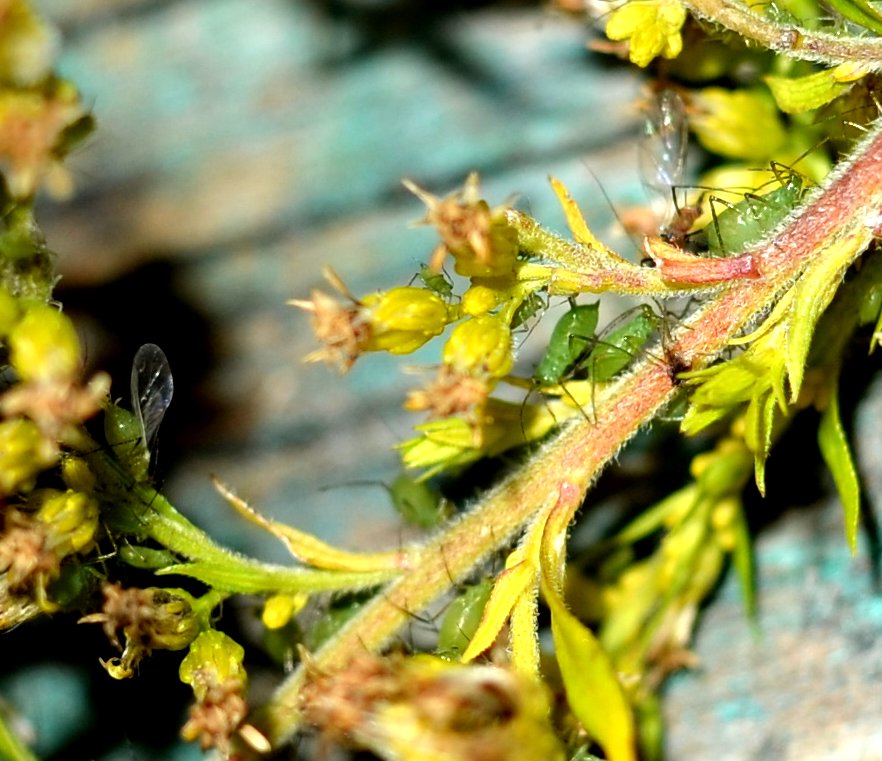
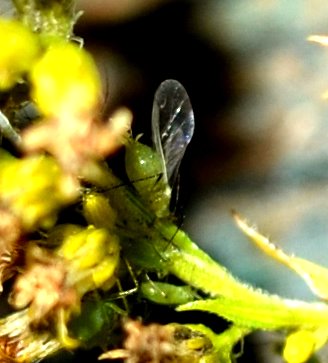
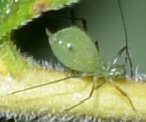
The goldenrod is quite a micro-habitat! This black beetle or bug is one that I've never been able to identify. Last year I thought it was a kind of Lygus bug, and it still may be. But it is so much thicker in side view that it really doesn't resemble the body type of any Lygus that I've ever seen. The next is another black-brown bug, different from the first, sort of Lygus-like but not our friendly hometown Lygus (image 3).
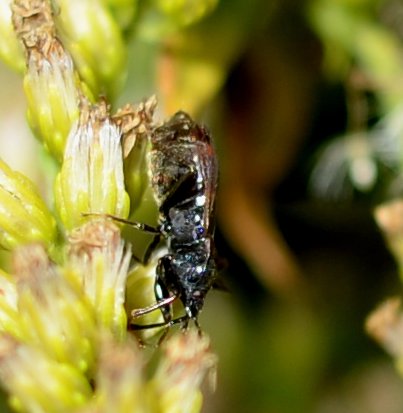
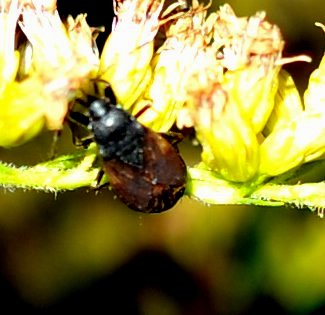
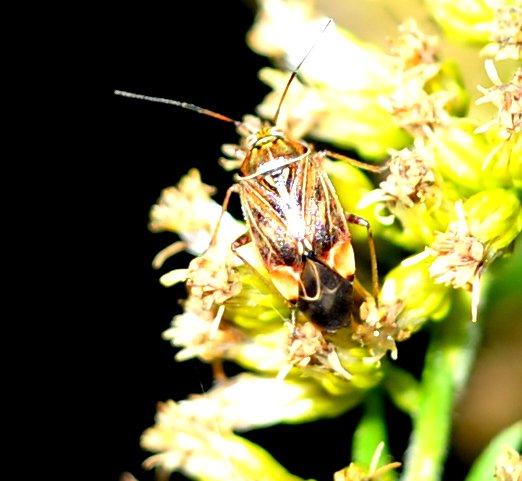
We had quite a few other bugs, some of them new to me. This first little guy is called the Long-necked Seed Bug. Next is a little leafhopper (with very human-like eye, don't you think?) Then there is this new leaf-footed bug, the Western conifer seed bug. Oh yes, and this old old friend, the orange assassin bug nymph.
 10 11 15 3.jpg)
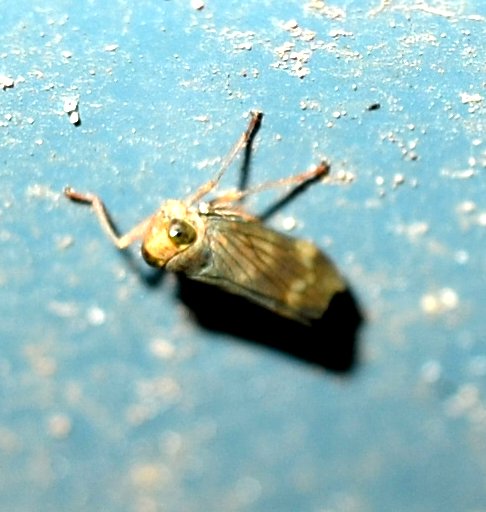
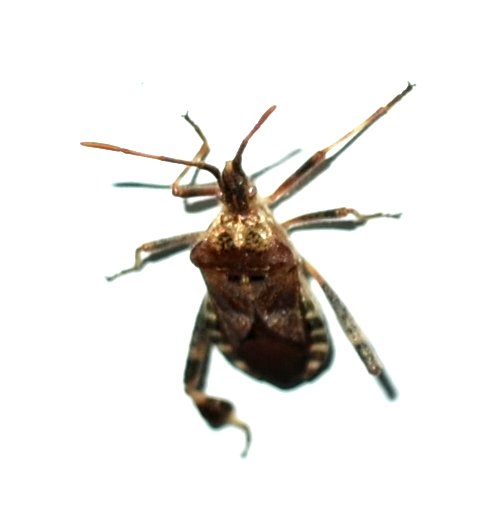
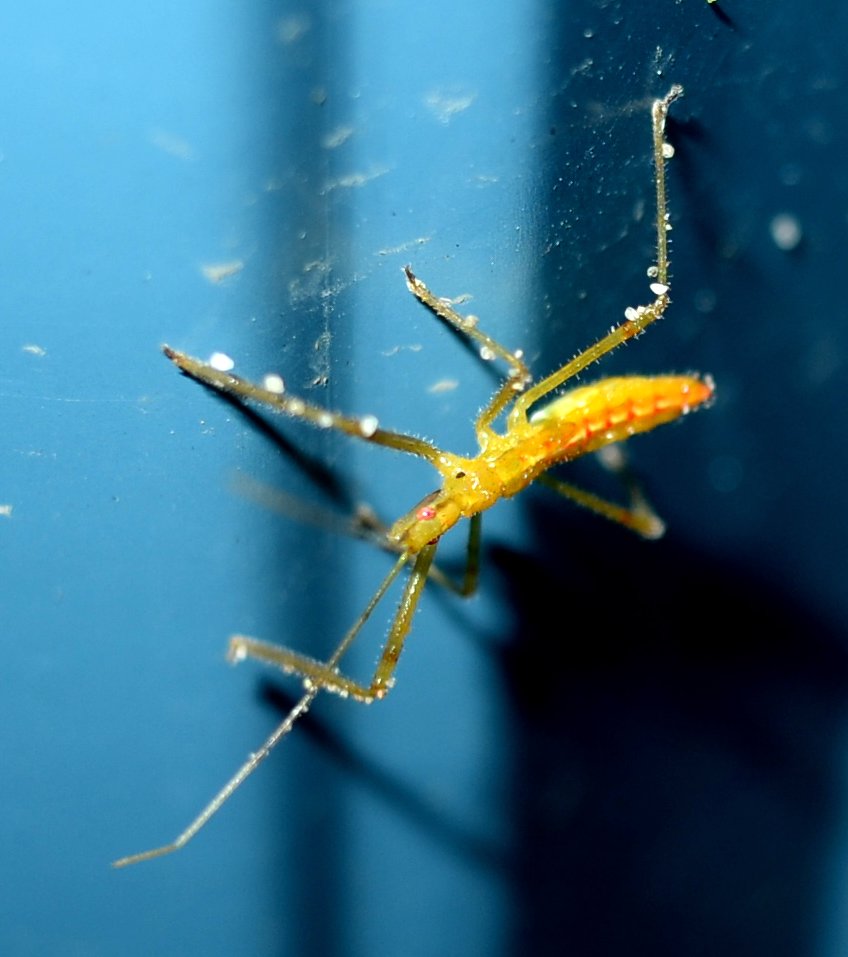
No new beetles, unless that goldenrod-loving black bug turns out to be one. The flies are getting tired. I saw a few kinds of crane flies. One, this orange-tinted one, and this old friendly one that seems to have block-printed wings. This black fly was hanging in a spider's web waiting to become supper, or maybe already having been supper. To put things into perspective, that tiny round pinkish thing is the tiny common house spider that caught our fly. It is just out of focus.
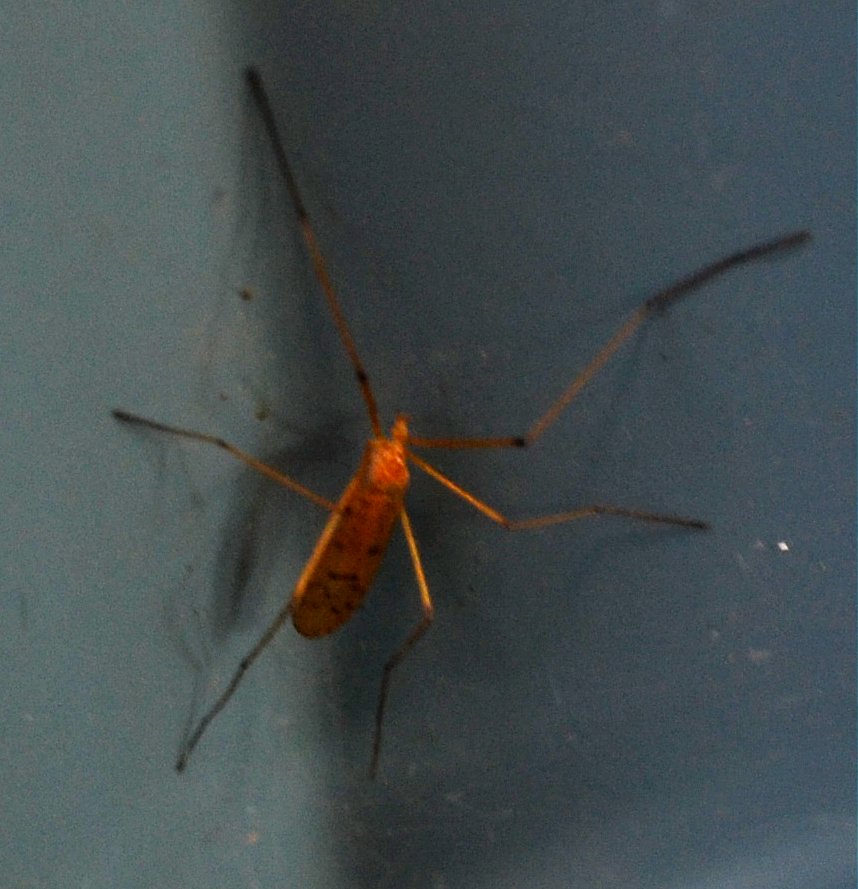

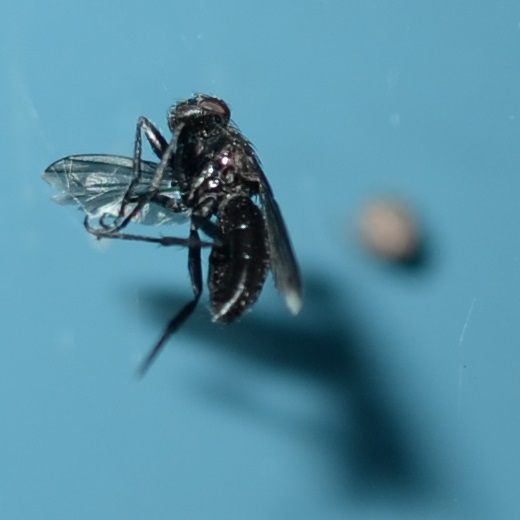
This angular-winged one, almost impossible to photograph because it was so black overall, stayed around for a few days. Here is an ordinary fly, seeming very tired in this chill, and a mosquito that seems to have lost its blood lust for a while.
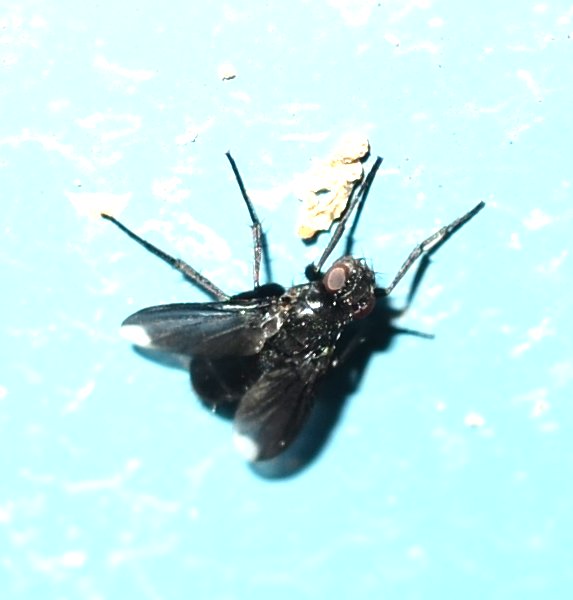
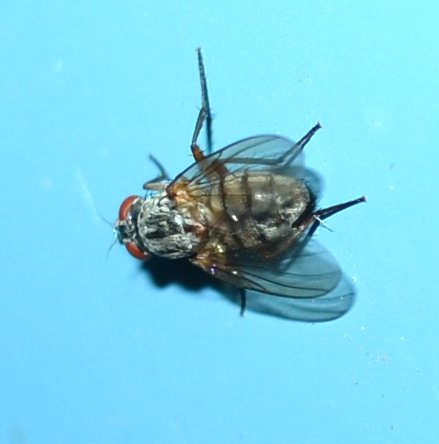

Wasps are also petering out - at least they aren't flying much. For several days I would find the occasional one on the back stairs. I finally figured out that the window that i had open for a box fan was letting things creep in through a badly-sealed crack. Now that the window is closed to keep the heat in, no more visiting wasps. Here are the last ones I saw: this downy yellowjacket worker, and a face view of the same. The last two are of a German yellowjacket male (count the abdominal segments) and worker, respectively.
.jpg)

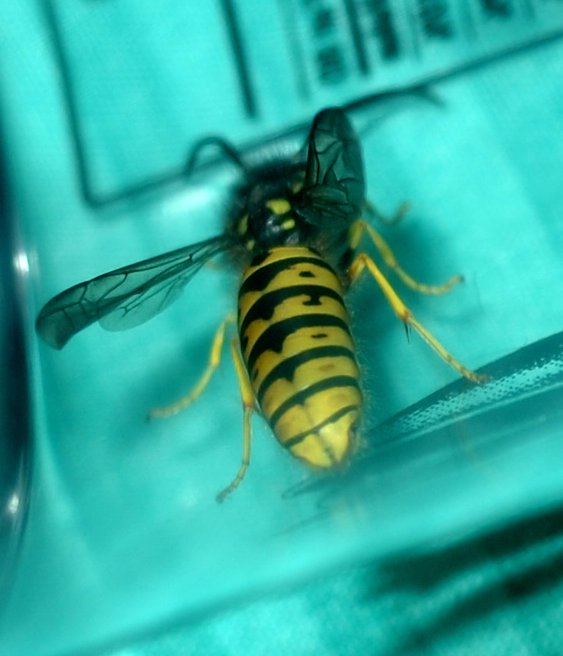
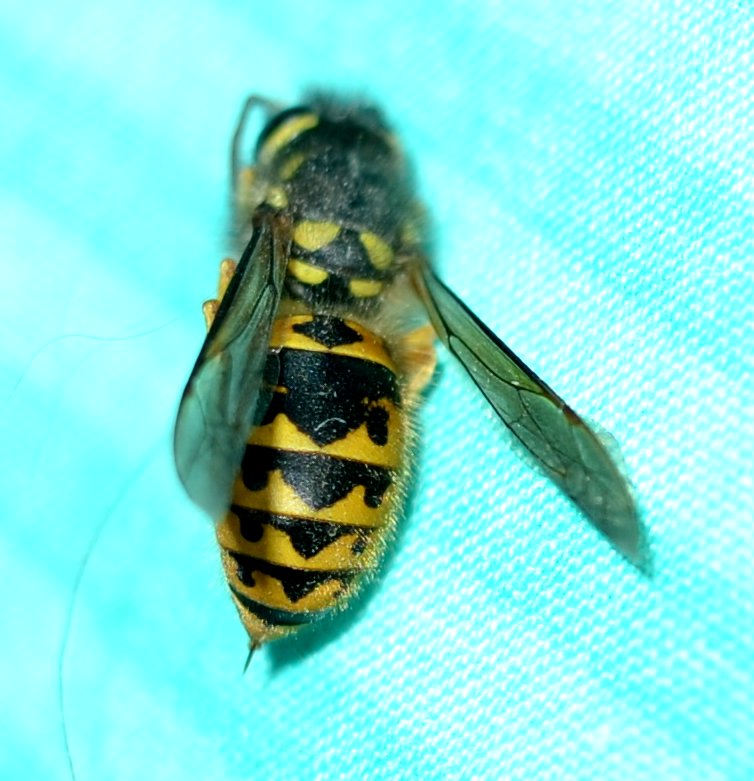
Which means we are down to the spiders. There are still lots of tiny baby common house spiders. This mystery spotted spider was back for more this week, and so was this dark red or black cobweb spider. My favorites, the little crab spiders, still cling to the dying goldenrod flowers in search of a nice Lygus or other stray.
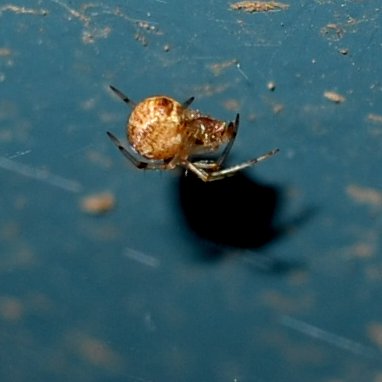
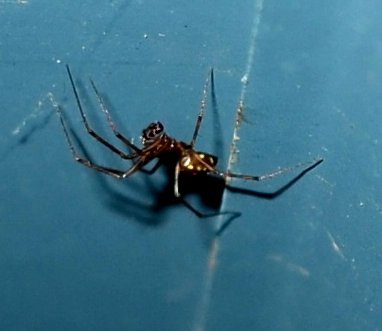
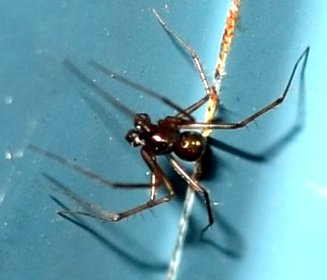
My favorites, the little crab spiders, still cling to the dying goldenrod flowers in search of a nice Lygus or other stray. I brought this little fellow in
so that the wind wouldn't keep me from photographing it. As it warmed up, it began to move around quite quickly. Finally it had lost all its patience and so I put it out into another goldenrod.
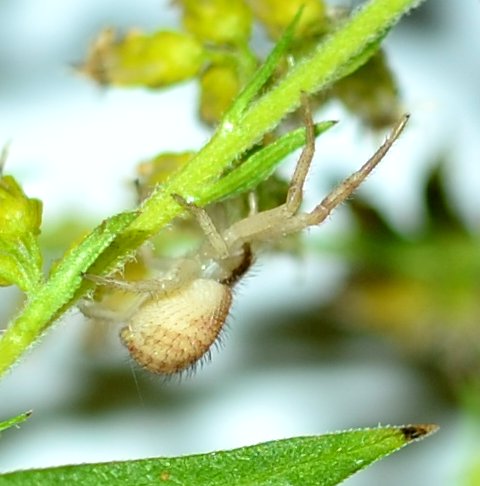
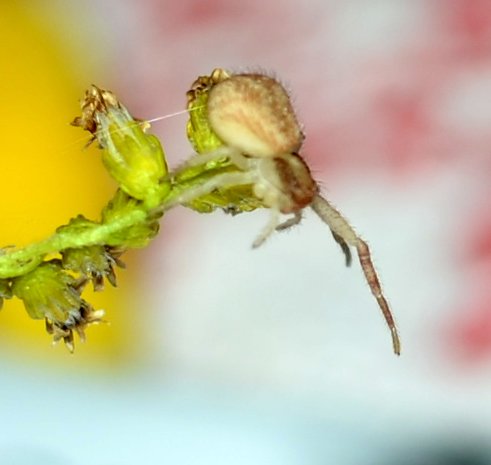
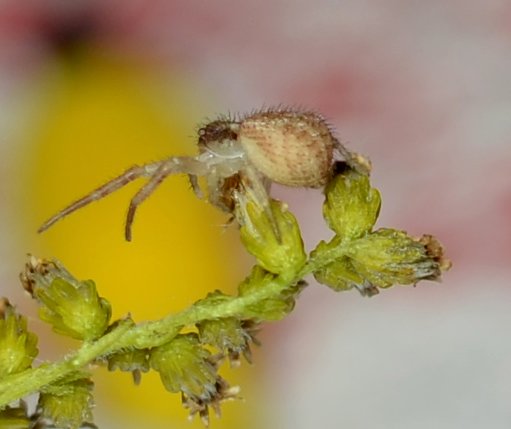
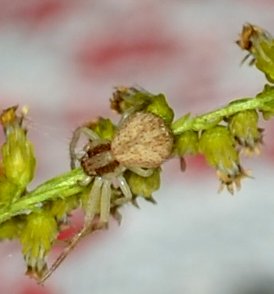
I stumbled and almost walked into the web of this full-grown cross orb-weaver. It had spread its web across a path, but fortunately I was able to recover and go around it. Coming back from the other side, I thought the front side (ventral) looked a lot like a clown with rouged cheeks and a long black beard (or maybe a horn for a nose).
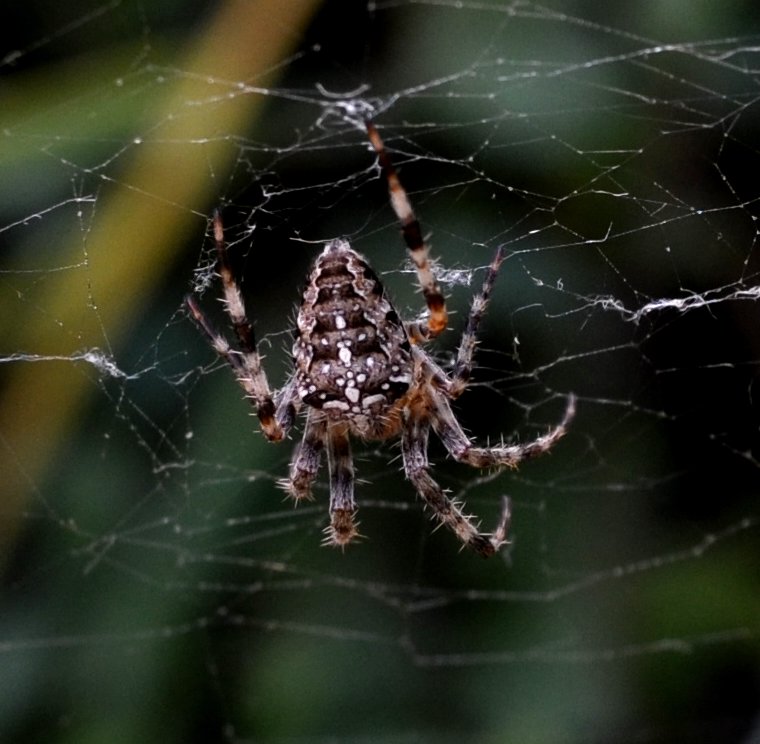
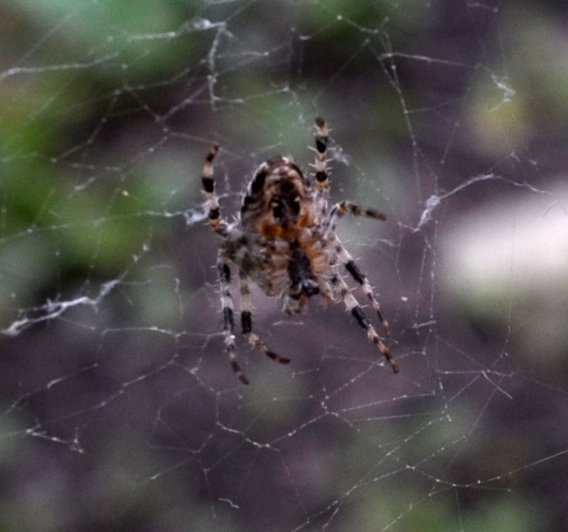
Just one more spider, a little jumper with a pretty wavy brown pattern on its abdomen. It honored me with a number of headlight-eyed face views. I always think they look very friendly, and this one seems particularly innocent as its palps look like pom-poms. This side view shows you how very substantial they are for their tiny size. Oh, I can't leave you without this view of a harvestman, or Daddy-long-legs. It seemed shy as it negotiated the aster leaves. How lovely it was with the purple remnants of the aster flowers.
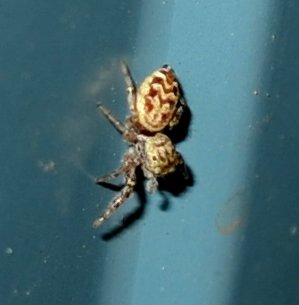
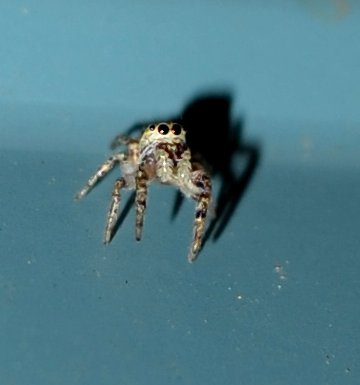
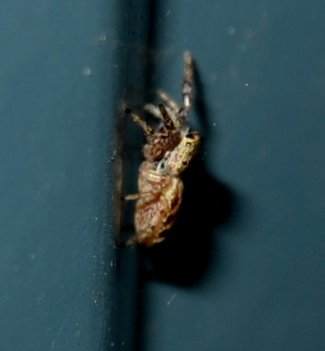
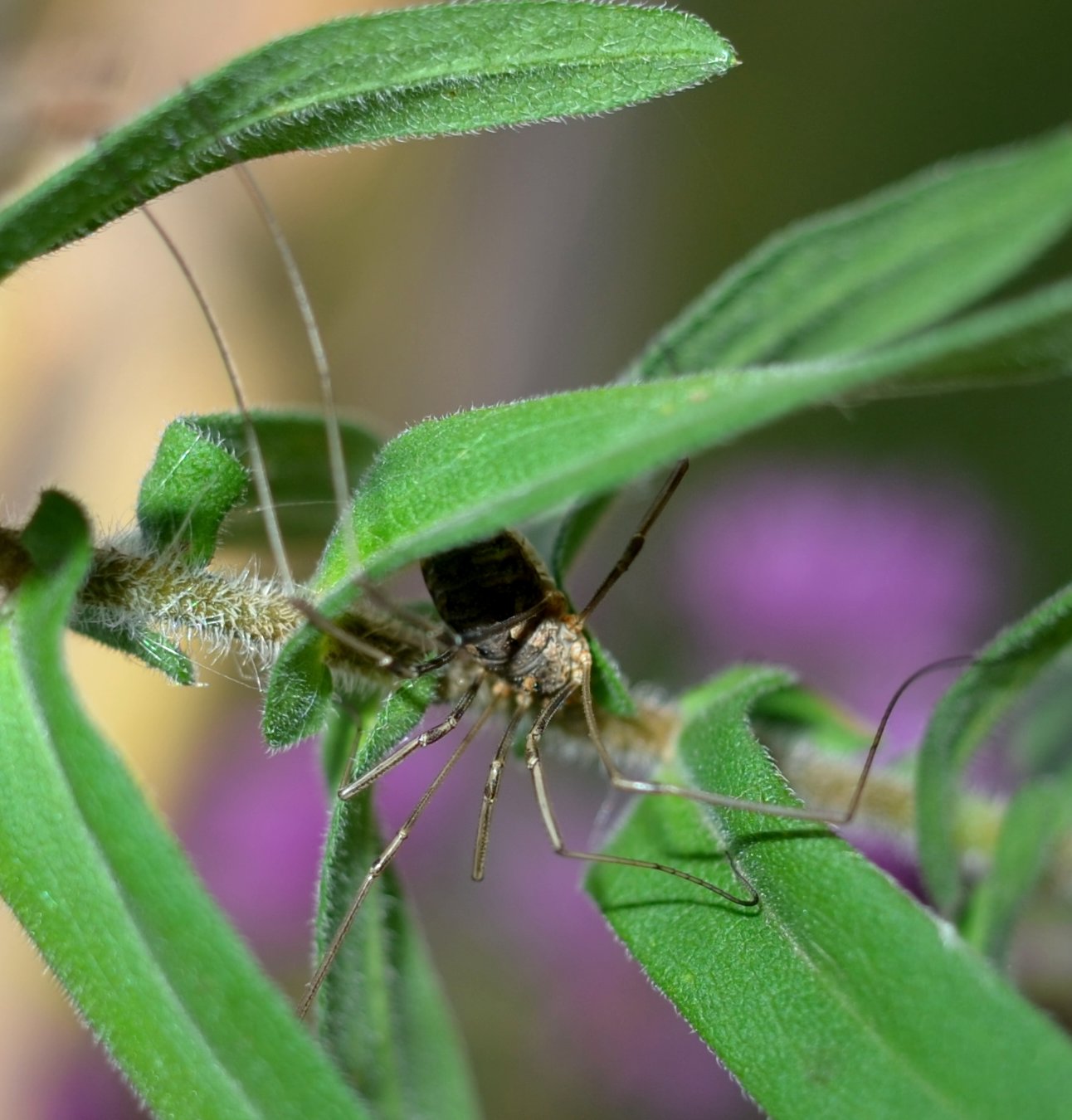
So, my friends, a rather short blog for this week. There are some promises of milder weather in the coming week, so we'll have to see what is still here.
For now, some views of the nightshade's deepening purple patterns, the ever-reddening epimedium, and a maple tree. For some reason, all the maples have been glorious this year.
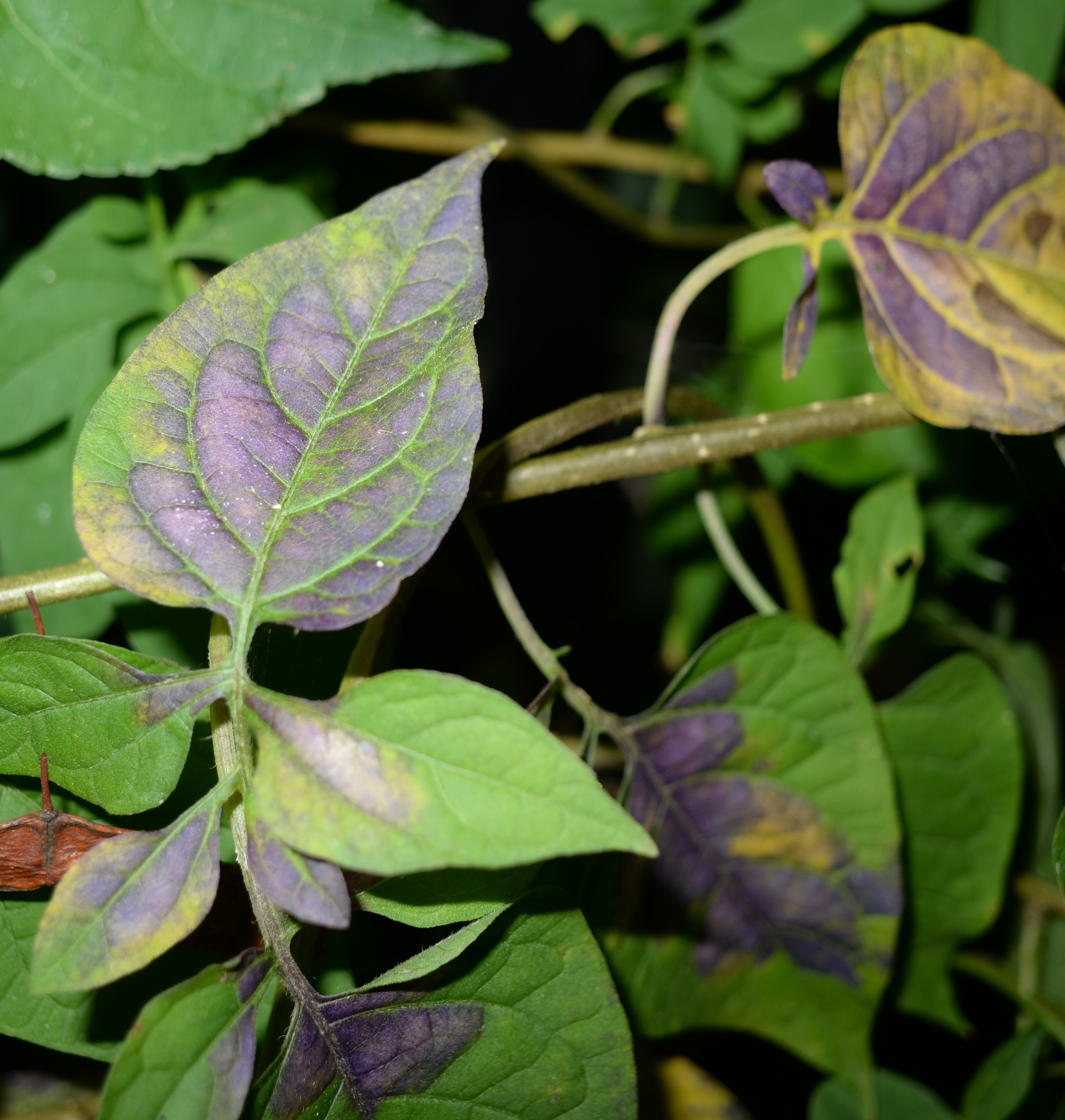
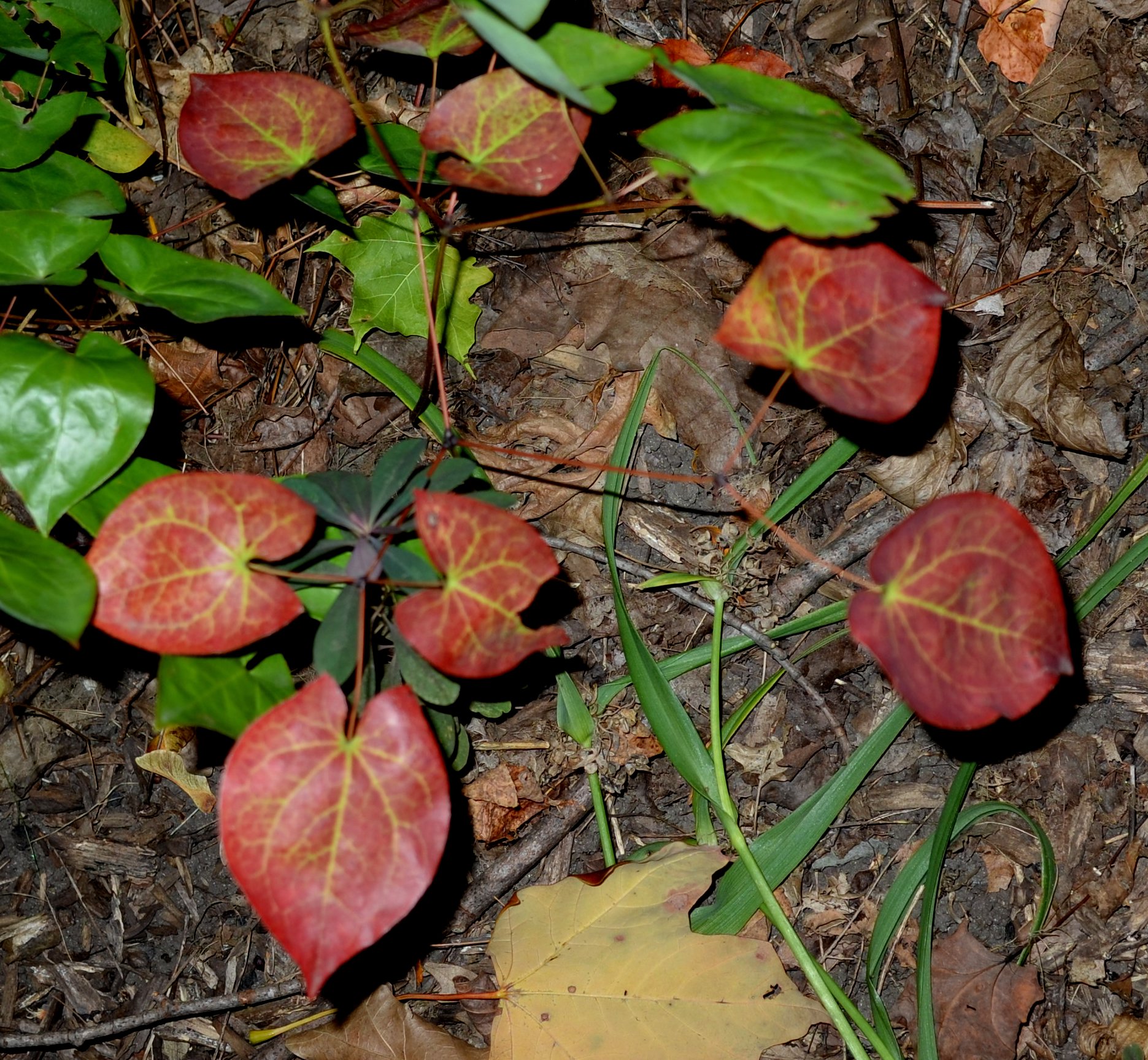
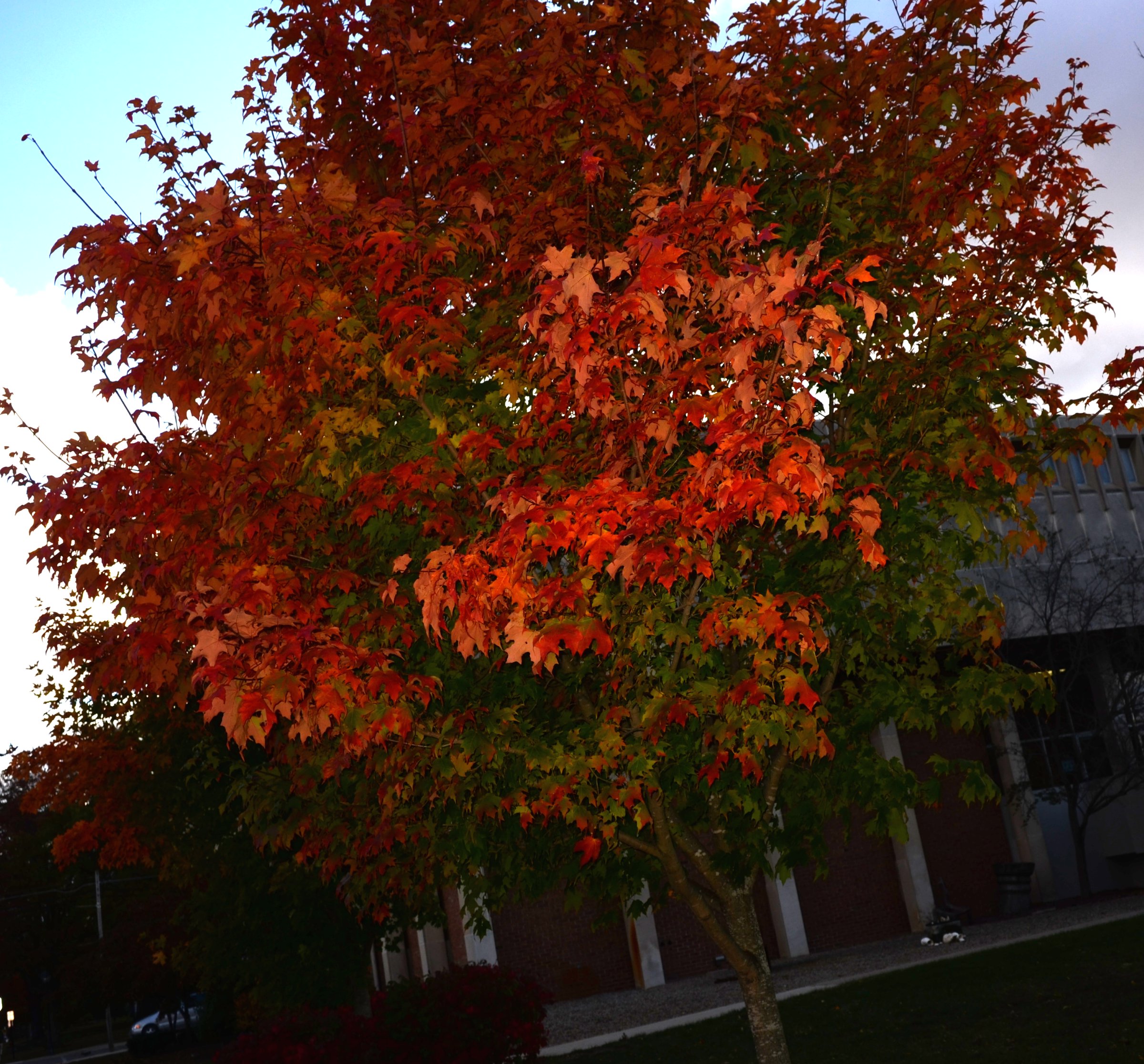
Let's see what remains for us next week. Take care till then!
Back to October 11
On to October 25
Back to 2015 menu
Back to main menu
copyright Martha O'Kennon 2015












 10 11 15 3.jpg)









.jpg)


















